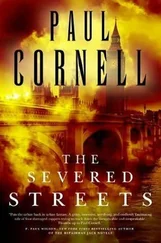When Pellegrini and Landsman press the pathologists for the best possible estimate, they are told that their victim appears to be coming out of first-stage rigor and has therefore been dead for at least twelve hours. Given the absence of any decomposition and the extra meal in her stomach, the detectives make their first assumption: Latonya Wallace was probably held captive for a day, killed on Wednesday night, and then dumped on Newington Avenue in the early hours of Thursday morning.
The remainder of the autopsy is unambiguous. Latonya Wallace had been strangled with a piece of cord or rope, then brutally disemboweled with a sharp instrument, probably a serrated table knife. She sustained at least six deep wounds to the chest and abdomen, suggesting a level of violence and intensity that detectives categorize as overkill. Although the victim was discovered fully clothed, a fresh vaginal tear indicates some type of molestation, but vaginal, anal and oral swabs come up negative for semen. Finally, the pathologists note that a tiny star-shaped earring is present in one earlobe but missing from the other. The family would later confirm that she wore two such earrings to school on Tuesday.
Examining the wounds in detail, Pellegrini and Landsman are convinced that the rear of Newington Avenue is not the site of the murder. There was little blood at the death scene, even though the child’s wounds were severe and bleeding would have been pronounced. The first and most essential question for the detectives is clear: Where was the child murdered, if not in the back alley? Where is the primary crime scene?
As the detectives working the case gather in the homicide office late that afternoon to compare notes, Jay Landsman outlines a scenario increasingly obvious to most of the men in the room:
“She’s found between the library and her house,” says the sergeant, “so whoever took her is from the neighborhood, and she probably knew him if he was able to get her off the street in the middle of the day. He has to take her inside someplace. If you grabbed her off the street in a car, you’d drive her somewhere else; you wouldn’t bring the body back into the neighborhood after you killed her.”
Landsman also suggests, to general agreement, that the girl was probably murdered within a block or two of where she was dumped. Even in the early morning hours, he reasons, someone carrying the bloody body of a child, concealed in little more than a red raincoat, would not want to travel in the open for any great distance.
“Unless he takes her to the alley in a car,” adds Pellegrini.
“But then you’re back to asking yourself why the guy, if he’s already got her in a car, would go and dump her in an alley where anyone could look out a window and see him,” argues Landsman. “Why not just drive her out into the woods somewhere?”
“Maybe you’re dealing with a goof,” says Pellegrini.
“No,” says Landsman. “Your crime scene is right in that fucking neighborhood. It’s probably going to be someone who lives in one of the houses in that block who took her right out of his back door… or it’s a vacant house or a garage or something like that.”
The meeting, such as it is, breaks down into smaller groups of detectives, with Landsman putting men to work on small, insulated parts of the whole.
As the primary detective, Pellegrini begins reading through the key statements of relatives taken by half a dozen detectives earlier in the day, digesting pieces of the puzzle that fell to the other investigators. Q-and-A sheets from the victim’s family members, from some of the child’s schoolmates, from the fifty-three-year-old resident of 718 Newington who, on taking out the trash that morning, had discovered the body-Pellegrini scans each page with an eye for an unusual phrase, an inconsistency, anything out of the ordinary. He was there for some of the interviews; others took place before he returned from the autopsy. Now, he is playing catchup, working to stay on top of a case that is expanding geometrically.
At the same time, Edgerton and Ceruti sit in the annex office, surrounded by a collection of brown paper evidence bags containing the jetsam from the morning autopsy: shoes, bloodied clothes, scrapings from the victim’s fingernails for possible DNA or blood typing, samples of victim’s blood and hair for possible future comparisons, and a series of hairs, both negroid and caucasoid, which were discovered on the victim and might or might not have anything to do with the crime.
The presence of foreign hairs is carefully noted, but in Baltimore at least, homicide detectives have come to regard that kind of trace evidence as the least valuable. For one thing, the crime lab can only on rare occasions-usually those involving distinctly colored caucasoid hairs-match beyond any reasonable doubt a recovered strand with a suspect. Particularly with negroid and darker caucasoid hairs, the best that forensic science can do is declare that the same class characteristics exist between a suspect’s hair and the recovered strand. DNA-genetic coding, which can unambiguously link trace evidence to a single suspect by matching gene characteristics, is now becoming more widely available to law enforcement, but the process works best with blood and tissue samples. To match the DNA coding of human hair to a suspect, at least one entire hair, with its root intact, is needed. Moreover, Landsman and many other detectives have strong doubts about the integrity of trace evidence at the medical examiner’s office, where the number of autopsies performed daily in cramped conditions can produce a less than pristine environment. Hairs recovered from Latonya Wallace could just as easily have come from the plastic wrap on the body litter or a towel used to clean the victim prior to the internal examination. They may be hairs from the ME’s attendants and investigators, or the paramedics who pronounced the victim, or from the last body carted away on the body litter or laid out on the examination gurneys.
Edgerton begins filling in the blanks on the first of a series of lab forms: One red raincoat, bloodstained. One red waist jacket, bloodstained. One pair blue rain shoes. Request blood and trace evidence analysis. Special latent print analysis.
Other detectives collate and catalogue witness statements for the case file or work the typewriters in the admin office, pounding out one report after another on the day’s activity. Still other detectives are clustered around the computer terminal in the admin office, punching up criminal records for nearly every name obtained in a preliminary canvass of the north side of Newington’s 700 block-a stretch of sixteen rowhouses that back up against the alley where the body was found.
The result of the computer check is itself an education in city living, and Pellegrini, after digesting the witness statements, begins reading each printout. He soon grows weary at the repetition. More than half of the four dozen names typed into the computer generate a couple of pages of prior arrests. Armed robbery, assault with intent, rape, theft, deadly weapon-in terms of criminal endeavor, there seem to be few virgins left in Reservoir Hill. Of particular interest to Pellegrini are the half dozen males who show priors for at least one sex offense.
Also punched through the computer is one name that the victim’s family gave to the police, the name of the proprietor of a fish store on Whitelock Street. Latonya Wallace occasionally worked at the store for pocket change until her mother’s boyfriend-the quiet young man who opened the apartment door for Edgerton that morning-became suspicious. The Fish Man, as he has long been known in the neighborhood, is a fifty-one-year-old living alone in a second-floor apartment across the street from his store. A one-story, single-room affair near the elbow bend of Whitelock Street, Reservoir Hill’s short commercial stretch, the store itself is about two blocks west of the alley where the body was dumped. The Fish Man, a grizzled, timeworn piece of work, was quite friendly with Latonya-a little too friendly, as far as the child’s family was concerned. There had been some talk among the schoolchildren and their parents, and Latonya was told explicitly to avoid the Whitelock Street store.
Читать дальше












